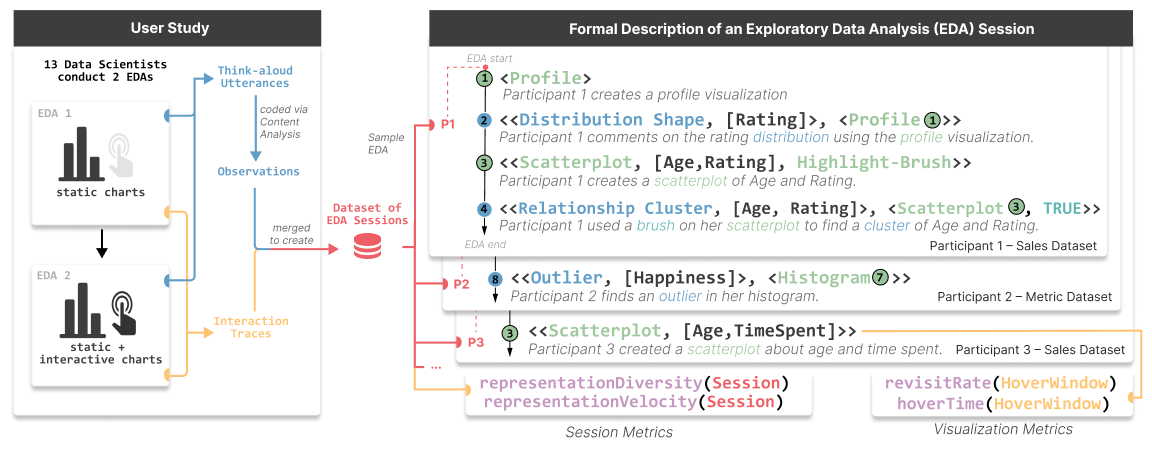Charting EDA: How Visualizations and Interactions Shape Analysis in Computational Notebooks.
Dylan Wootton - MIT, Cambridge, United States
Amy Rae Fox - MIT, Cambridge, United States
Evan Peck - University of Colorado Boulder, Boulder, United States
Arvind Satyanarayan - MIT, Cambridge, United States
Screen-reader Accessible PDF
Download Supplemental Material
Room: Bayshore V
2024-10-16T17:45:00ZGMT-0600Change your timezone on the schedule page
2024-10-16T17:45:00Z

Fast forward
Full Video
Keywords
Interaction Design, Methodologies, HumanQual, HumanQuant.
Abstract
Interactive visualizations are powerful tools for Exploratory Data Analysis (EDA), but how do they affect the observations analysts make about their data? We conducted a qualitative experiment with 13 professional data scientists analyzing two datasets with Jupyter notebooks, collecting a rich dataset of interaction traces and think-aloud utterances. By qualitatively coding participant utterances, we introduce a formalism that describes EDA as a sequence of analysis states, where each state is comprised of either a representation an analyst constructs (e.g., the output of a data frame, an interactive visualization, etc.) or an observation the analyst makes (e.g., about missing data, the relationship between variables, etc.). By applying our formalism to our dataset, we identify that interactive visualizations, on average, lead to earlier and more complex insights about relationships between dataset attributes compared to static visualizations. Moreover, by calculating metrics such as revisit count and representational diversity, we uncover that some representations serve more as "planning aids" during EDA rather than tools strictly for hypothesis-answering. We show how these measures help identify other patterns of analysis behavior, such as the "80-20 rule", where a small subset of representations drove the majority of observations. Based on these findings, we offer design guidelines for interactive exploratory analysis tooling and reflect on future directions for studying the role that visualizations play in EDA.